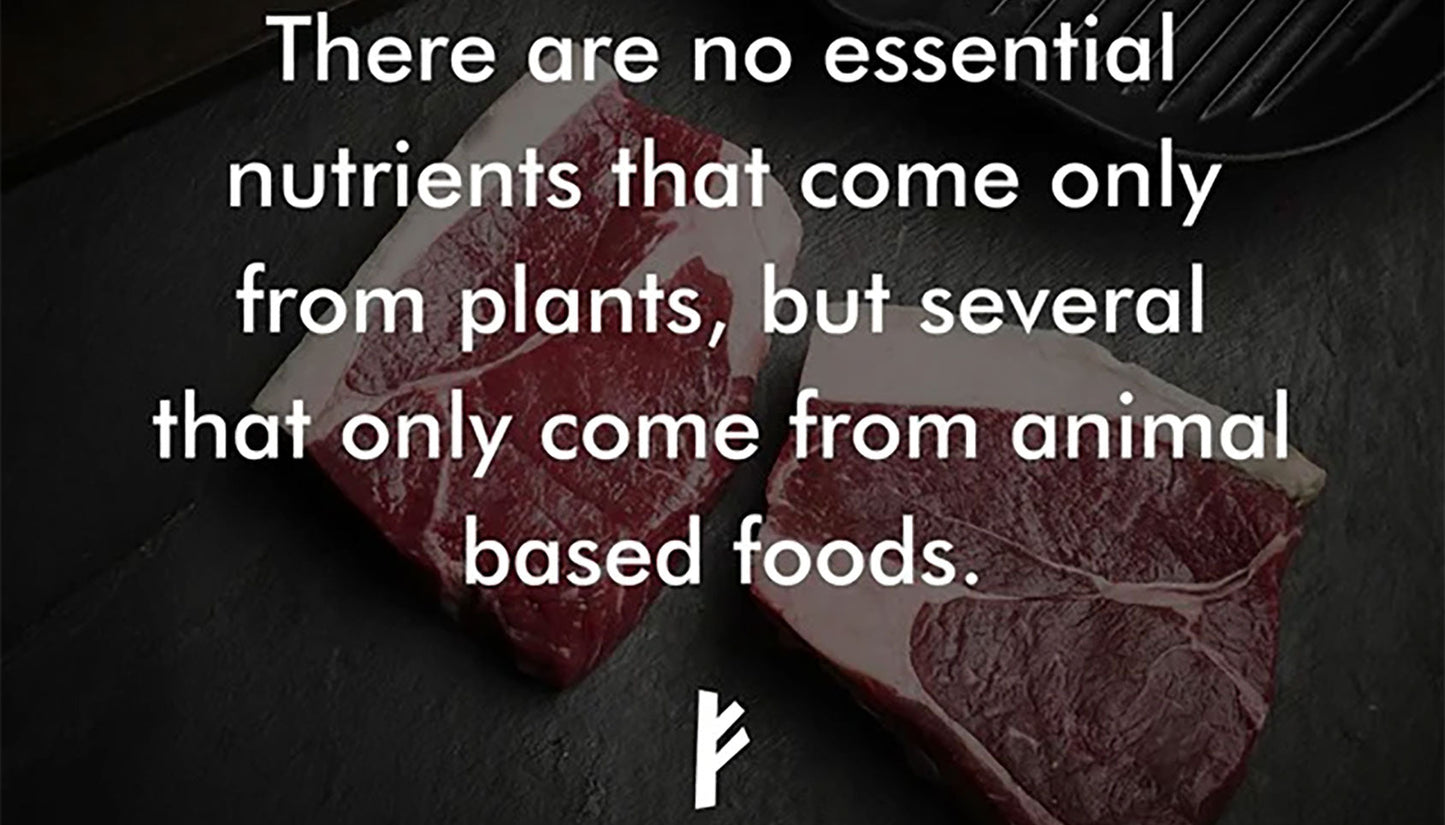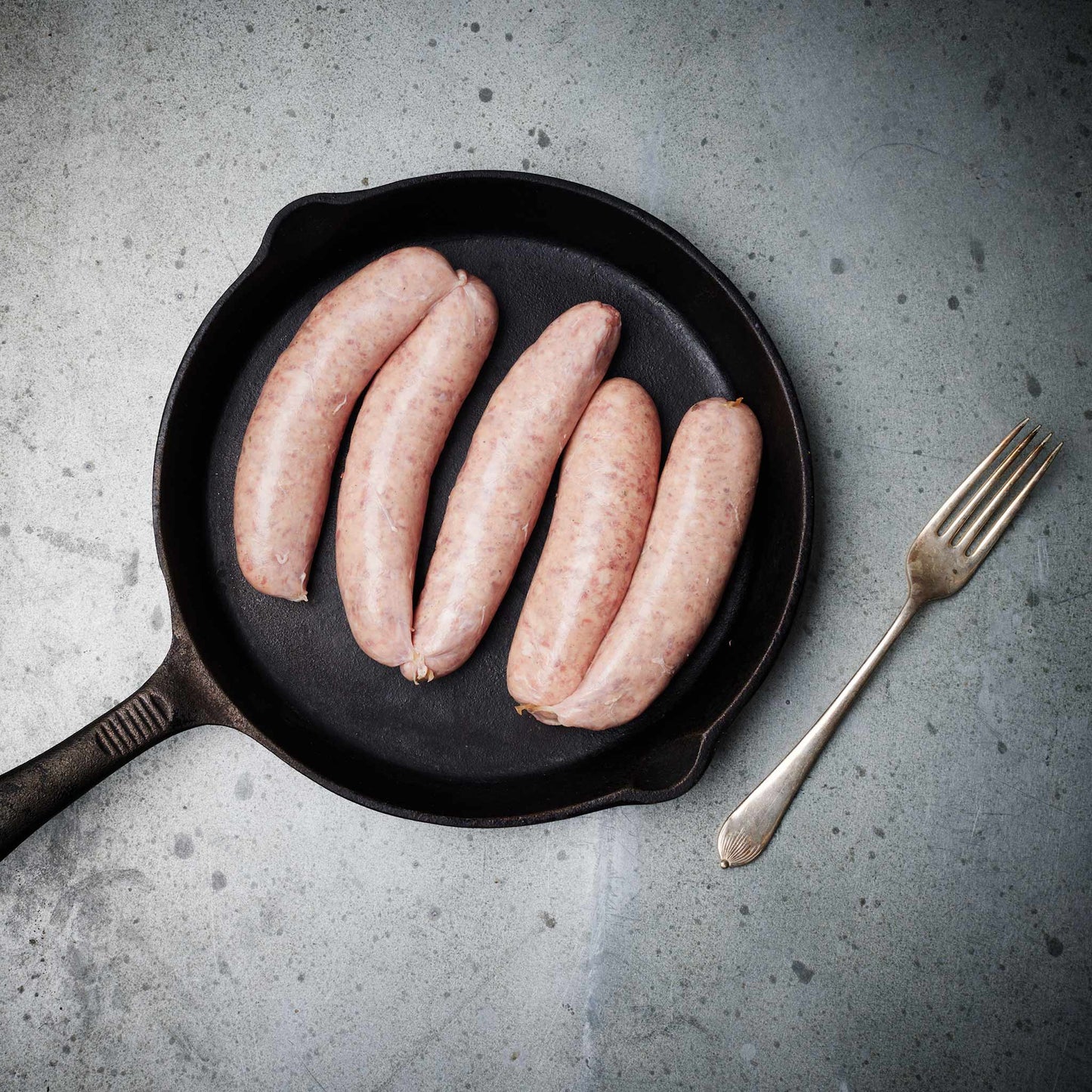We source our chicken from one farm in Leicestershire. The farm is Pasture for Life certified and rears truly free range, outdoor birds.

There are no essential nutrients that come only from plants but several that only come from animal based foods.
There are 3 macronutrients that make up the food we consume. A macronutrient is a chemical element or substance that is essential in relatively large amounts to the growth and health of a living organism. For us as humans, the 3 macros are fats, protein and carbohydrates. Both plants and animal foods can provide us with varying proportions of macros.
Of the 3 macros it can be argued that only 2 are essential to our life and that is fats and proteins. Our bodies do require a small amount of glucose (carbohydrate) but if not taken in the diet this can be made from protein through a process called gluconeogenesis.
In this article we will dig deep into one of the essential macros that is provided by animal based foods and compare it to plant based sources.
Protein
The human body is by mass about 65% water and 20% of what is left is protein, meaning most of the non-water weight of our bodies is made from proteins. This includes our muscles and internal organs, and all of our protein comes from food.
There is a near infinite number of possible proteins that can be assembled from amino acids. Amino acids are the body's building blocks and we have identified just over 500 so far. The human body requires 20 amino acids but there are 9 that are are of special interest to us: these are the ones that are essential for life; without them, we will die. The other 11 we can manufacture in our bodies for use.
The 9 essential amino acids are:
histidine, isoleucine, leucine, lysine, methionine, phenylalanine, threonine, tryptophan, and valine.
It's not just recommended that we get these aminos; it's vital. All of these essential amino acids are found together in meats and animals based foods. All can be found in plant based foods, but rarely at the same time and never in the same proportions as meats.
Plant based complete proteins.
Some plant based foods are said to be 'complete proteins' meaning they contain all 9 essential amino acids, but the proportions do not match meat. To make a comparison we will choose to look at probably the best plant based protein we can find: soy.
How good is soy as a protein source?
Soy is probably the best vegan source of protein. Although technically complete, as it does contain 'some' of all 9 essential aminos, the amounts of methionine and lysine is very low compared to meat. [1]
Methionine is a sulphur based amino and is rather useful to us. Studies have shown that those on a vegan diet can be low in this sulphur-containing class of amino acids. [2]
So what does it do for us?
Methionine has many key functions in the human body. One of the major roles of methionine in the body is that it can be used to produce other important molecules.
It is involved in the production of cysteine, the other sulphur-containing amino acid used to build proteins in the body. [3]
Cysteine can, in turn, create a variety of molecules, including proteins, glutathione and taurine [4]
Glutathione is sometimes called the “master antioxidant” due to its critical role in the defences of your body [5]
It also plays a role in the metabolism of nutrients in the body and the production of DNA and proteins [6].
So what about lysine?
It’s very important for normal growth and muscle turnover and used to form carnitine, a substance found in most cells of your body. What’s more, it helps transport fats across your cells to be burned for energy. But that is not all.
Lysine may play a role in reducing anxiety, adding evidence to our post about mental health and nutrition, which showed clear links between the vegan diet and poor mental health.
One study found that it blocked receptors involved in stress response. Researchers observed that rats given lysine had reduced rates of stress-induced loose bowel movements [7].
A one-week study in 50 healthy people noticed that supplementing with 2.64 grams of lysine and arginine lowered stress-induced anxiety and reduced levels of the stress hormone cortisol [8].
Similarly, adding 4.2 grams of lysine per kilogram (2.2 pounds) of wheat flour in deprived villages in Syria helped reduce anxiety scores in males with very high stress levels [9].
After three months, consuming the lysine-enriched flour also helped reduce cortisol levels in women [10].
Lysine may also be able to help people with schizophrenia, a mental disorder that disrupts an individual’s perception of the outside world, often resulting in an inability to understand reality.
Though research is still in its early stages, lysine may have the potential to improve schizophrenia symptoms in combination with prescribed medication [11]
From these examples, we can see how misleading it is to suggest that plant based foods contain all essential amino acids. Of course it is possible to combine protein sources to make up for the lack of certain aminos here and there but this is a compromise.
Plant based proteins are not clean proteins
What do we mean by 'clean proteins'? We consider a protein to be clean if it is complete without other substances which may or may not be healthy or desirable. In other words, how pure the protein source is.
In the case of meat the only other things that come with the protein in any significant quantity are water and fats. No fibre, no sugars.
A typical 100g serving of 10% fat ground beef typically contains [12]:
- Calories: 217
- Water: 61%
- Protein: 26.1 grams
- Carbs: 0 grams
- Sugar: 0 grams
- Fiber: 0 grams
- Fat: 11.8 grams
So what's the problem, fibre and sugars are good for us and plants are healthy right?
Plants fight back.
Plants, and especially plant based sources of protein, contain many many other compounds which might not be so good for us, because they do not want to be eaten. Whilst it's true to say all organisms seek to preserve their life, animals are able to run away or fight; their defences against being eaten are external things like claws, scales, teeth, fur and stingers. Plants cannot run away so they have evolved to deter being eaten chemically.
Sometimes a plant will want some part to be eaten so that the seed is passed in tact through an animal's digestive tract and deposited away from the mother plant in a nice dollop of fertiliser ready to grow and many fruits are brightly coloured and sweet to the taste to encourage this. But many plants we eat for their protein content, such as bean and legumes, certainly do not want to pass through a digestive tract because they will not survive and the plant will not reproduce.
Plant poisons are dose dependent.
Over the hundreds of millions of years that plants and animals have existed together, plants have evolved to protect their genetic material from being denatured in an animal's digestive system through a wide array of chemical deterrents.
For people avoiding meats and animal products the main sources of protein will be beans, legumes, seeds and nuts.
As this article is looking at protein we will look at some of the plant defences in non-animal protein sources and consider how they can impact human health.
Antinutrients
Phytates (Phytic acid)
Seeds such as nuts, edible seeds, beans/legumes, and grains store phosphorus as phytic acid. When phytic acid is bound to a mineral in the seed, it’s known as phytate. This is one of a group of chemicals called an anti-nutrient because of the action it has on our bodies.
It is called an anti-nutrient because it impairs the absorption of iron, zinc and calcium and may promote mineral deficiencies [13]. This applies to a single meal, not overall nutrient absorption throughout the day.
Phytic acid reduces mineral absorption during the meal but doesn’t have any effect on subsequent meals so snacking on nuts between meals could reduce the amount of iron, zinc and calcium you absorb from these nuts but not from the meal you eat a few hours later.
However, when you eat high phytate foods with most of your meals, mineral deficiencies may develop over time.
This is rarely a concern for those who follow well-balanced omnivorous diets but may be a significant problem for vegans for whom the main protein source is grains or legumes.
Lectins
Lectins are a family of proteins found in almost all foods, especially legumes and grains. For some people lectins cause increased gut permeability and drive autoimmune diseases. Lectins are mostly destroyed by cooking so lectin containing foods should not be undercooked or consumed raw.
Oligosaccharides
Beans make you fart and these compounds are the culprit. They are classed as a FODMAP, which is an acronym that stands for Fermentable Oligosaccharides Disaccharides Monosaccharides and Polyols. FODMAP intolerance is when you have difficulty digesting high FODMAP foods, which can trigger uncomfortable gastrointestinal symptoms like bloating, constipation, diarrhea, and pain.
Oxalates
Found in grains, bran, nuts, soy, spinach, rhubarb, Swiss chard, chocolate, black tea and more.
Problems are binding with calcium: Calcium and magnesium deficiency, kidney stones, disturb digestive enzymes. Hyperoxaluria may play a significant role in autism, COPD/asthma, thyroid disease, fibromyalgia, interstitial cystitis, vulvodynia, depression, arthritis. Researchers believed that “Oxalate hyperabsorption may be the main reason for stone formation in more than half of the idiopathic calcium oxalate stone formers”.
Goitrogens
Found in Soy, peanuts and cruciferous vegetables. Adverse effects are hypothyroidism.
Tannins
Contained in legumes, some fruits and vegetables, tea, chocolate, wine, coffee, vinegar. Can cause zinc and iron deficiency, decrease in both growth rate and body weight gain, perturbation of mineral absorption, inhibition of digestive enzymes, accelerate blood clotting, produce liver necrosis.
Trypsin inhibitors
Found in grains and legumes. Can cause growth inhibition and pancreatitis.
Alpha-amylase inhibitors
Found in grains, legumes, nuts skin, stevia leaves. Can cause Dysbiosis (candidiasis). Deleterious histological changes to the pancreas.
Gluten
Found in all wheat, rye and barley plants. Can cause digestive problems, leaky gut syndrome or autoimmune disease, allergic reactions, and cognitive problems.
Chaconine
Found in corn and plants of the Solanaceae family. Can cause digestive issues.
To summarise....
The list goes on and what is interesting is that some of these anti-nutrients can be beneficial in the correct dose and they affect all humans differently but a possible issue is simply exposure, how much of these you are consuming and for how long affects health, small infrequent doses are unlikely to cause problems and may even have benefits but as is the case of many things, too much leads to problems.
The take away.
Meats and animal based proteins are more easily absorbed, more complete and do not contain anti-nutrient compounds that can harm us. As a part of a balanced omnivorous diet these compounds are unlikely to be problematic but in a restrictive vegan diet they frequently cause problems.
Meat is clean protein; plants come with baggage.
[1] https://pubmed.ncbi.nlm.nih.gov/11312815/
[2] https://www.ncbi.nlm.nih.gov/pmc/articles/PMC2198910/
[2] https://www.ncbi.nlm.nih.gov/pmc/articles/PMC4705437/
[3] https://academic.oup.com/jn/article/136/6/1636S/4664439
[4] https://academic.oup.com/jn/article/136/6/1636S/4664439
[5] https://pubmed.ncbi.nlm.nih.gov/14988435/
[6] https://pubmed.ncbi.nlm.nih.gov/14988435/
[7] https://www.ncbi.nlm.nih.gov/pmc/articles/PMC307574/
[8] https://pubmed.ncbi.nlm.nih.gov/17510493/
[9] https://www.ncbi.nlm.nih.gov/pmc/articles/PMC420386/
[10] https://www.ncbi.nlm.nih.gov/pmc/articles/PMC420386/
[11] https://pubmed.ncbi.nlm.nih.gov/25227564/
[12] https://fdc.nal.usda.gov/
[13] https://pubmed.ncbi.nlm.nih.gov/19774556/



